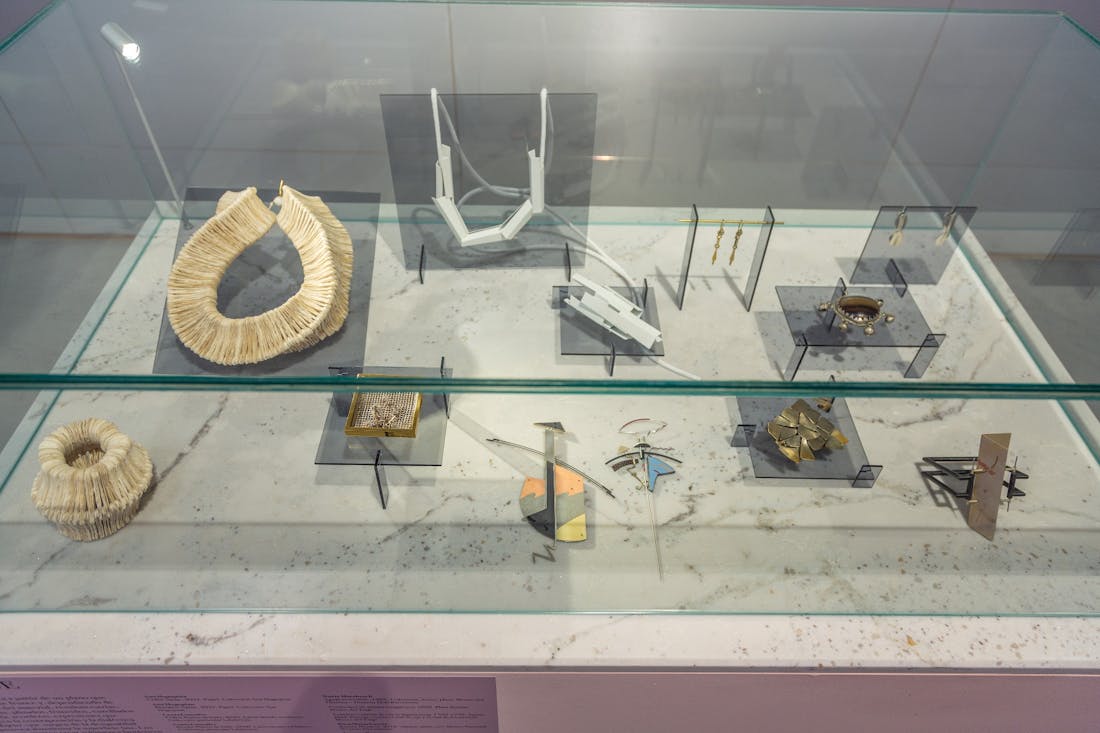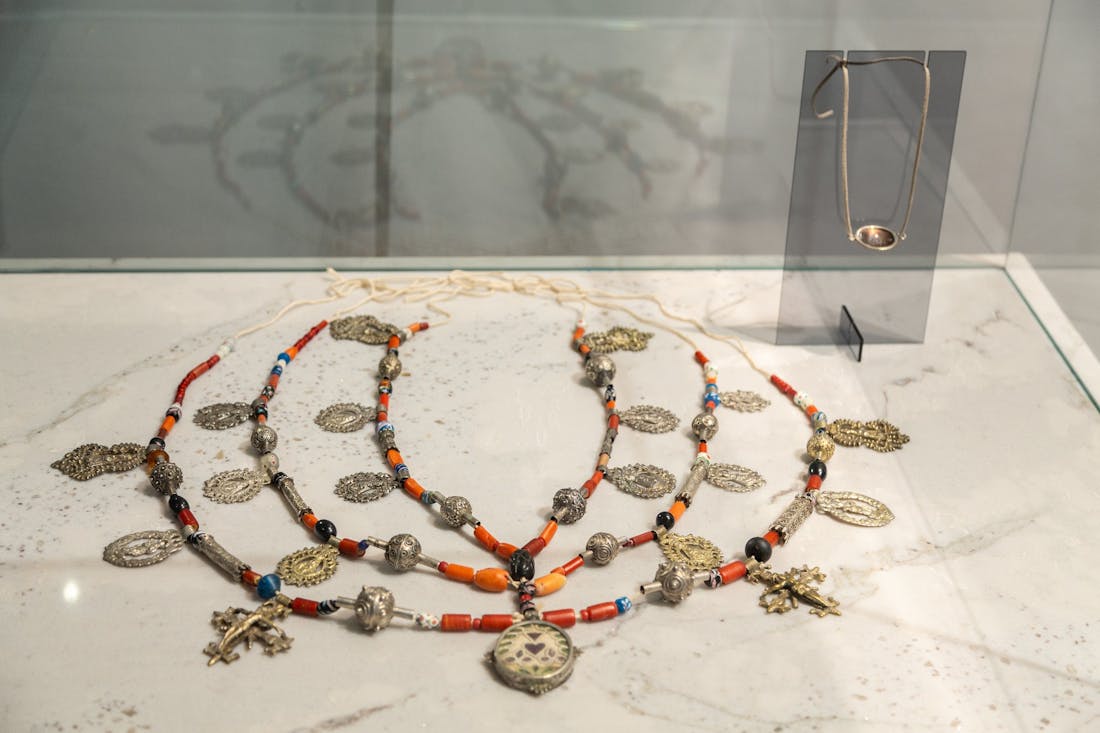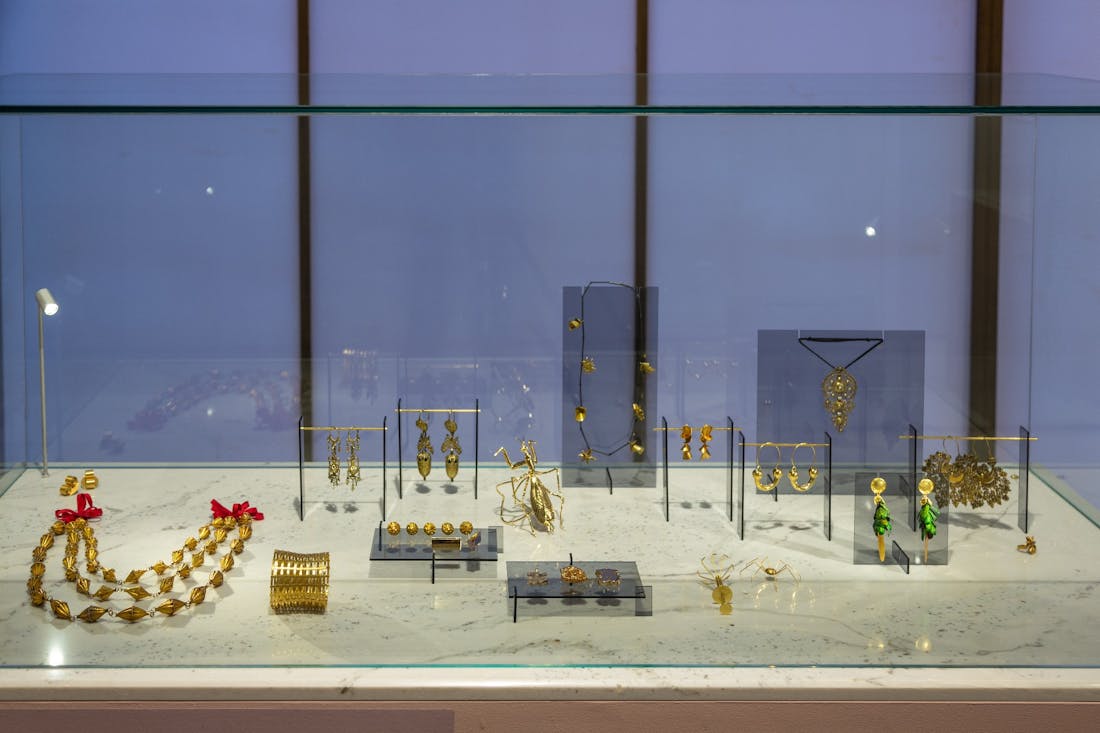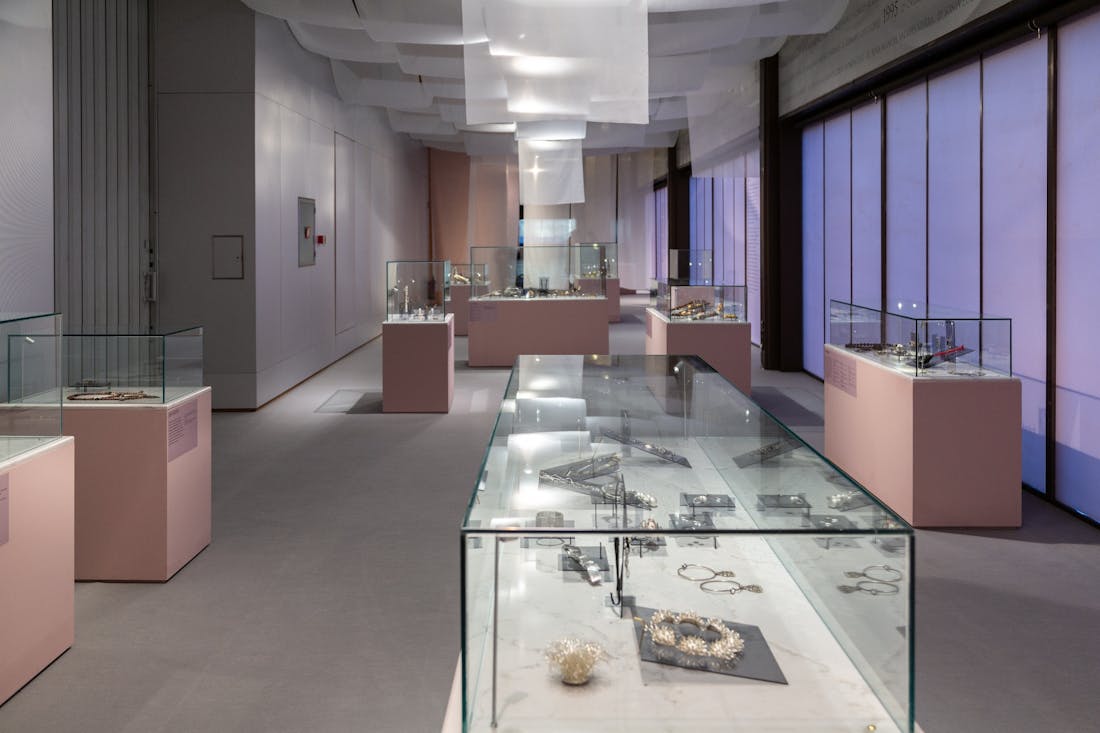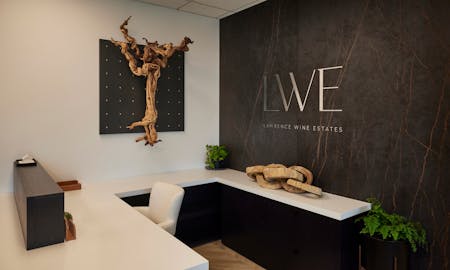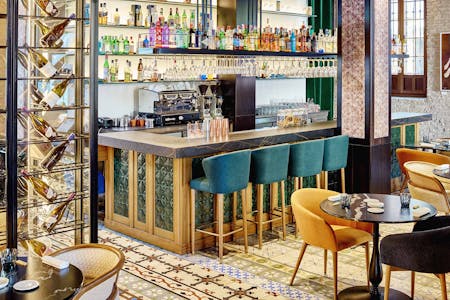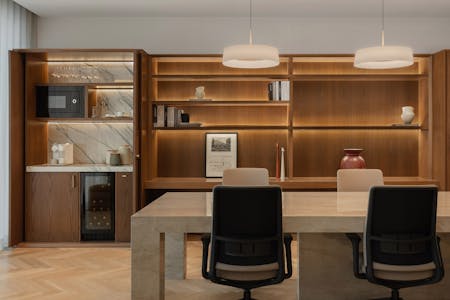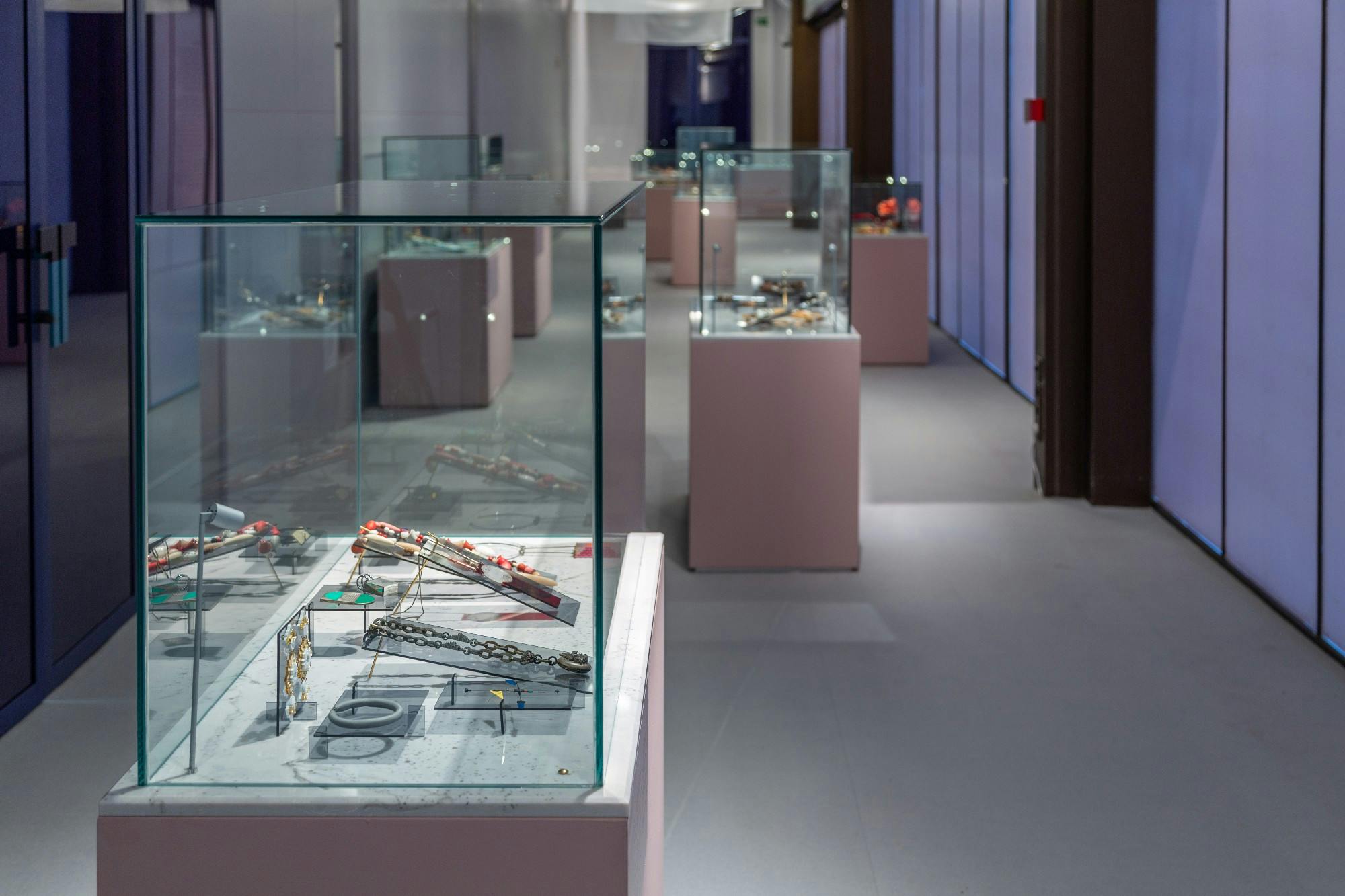
Silestone applications for museum and exhibition design
Home » Blog & Events » Silestone applications for museum and exhibition design
In the field of museum design, the choice of materials plays a key role not only in relation to the functionality and sustainability of spaces, but also in relation to their ability to communicate and move. The Silestone hybrid mineral surface stands out for its versatility, strength and wide range of colors, making it the brand of choice for innovative museum and exhibition projects.
This article explores how the various Silestone applications can be used in museum and exhibition design, highlighting their impact in creating environments that enrich the visitor experience and enhance the display of works of art and historical objects.
An example of this is the collaboration between Cosentino and Spain’s Museo del Traje (Museum of Costume) for the recently opened exhibition ‘Escultura Tímida’, in which curators Concha Herranz, curator of the museum’s jewellery collection, and Helena Rohner, jewellery designer, reflect on what modern jewellery is, where its roots lie and how it transcends the broader concept of ‘fashion’.
For designer Helena Rohner, the biggest challenge as a curator was undoubtedly to select the different pieces in such a way that the exhibition would be balanced, interesting and beautiful, and that there would be harmony and connection between the pieces on display. Secondly, it was necessary to decide how to display the jewellery so that it all shone equally, taking into account the conservation constraints of the pieces.
To bring this exhibition to life, they have enlisted the services of interior designer Marta Muñoz: “My aim was to convey this idea in the museography, creating an elegant and quiet space that combines the ethereal and intangible – through the use of diffused lighting and white fabrics – with the concrete and material, where Silestone surfaces and pale pink shades act as a bridge to the earthly world.”
Aesthetics and functionality: a perfect balance thanks to Silestone
Aesthetics play a key role in museum and exhibition design, the aim being to create spaces that complement and enhance the works on display. Silestone offers a wide range of colors and finishes, from natural shades to more vibrant tones and textures that mimic natural materials such as wood and stone. This range allows architects and designers to choose the perfect surface to match the concept and overall design of the exhibition space, enhancing the works on display without overpowering the space.
For the ‘Escultura Tímida’ exhibition, designer Marta Muñoz chose Silestone because, according to the designer, the material helped her to enhance and highlight each piece of jewellery. Specifically, Muñoz chose Eclectic Pearl, a ‘jewel’ color from the Le Chic collection, which features a greyish pearl background with gold accents, which the designer says were key to creating a dialogue with the jewellery on display.
Silestone’s versatile applications for museum design
Silestone’s applications for museums and exhibitions are as varied as they are innovative. From counters that welcome visitors to pedestals that elegantly display works of art, Silestone adapts to the specific needs of each project.
When it comes to choosing materials and surfaces for an exhibition design, museum specialist Marta Muñoz looks for consistency with the concept as well as sobriety and quality. In her own words: “You can’t make an exhibition with materials that diminish the works of art or don’t complement them adequately.
For this exhibition, Silestone was used as the surface for the display cases containing the more than 200 pieces of jewellery on display. The Silestone slabs were mounted on pale pink bases, adding a touch of elegance and beauty. “By using Silestone for the cases, I was able to create a continuous narrative throughout the 21 display cases,” says the designer.
The ‘Escultura tímida’ exhibition, a success story
Many renowned museums and exhibitions have chosen Silestone for their design, demonstrating the great versatility and beauty of our surfaces. These projects stand out for their ability to combine functionality, aesthetics and sustainability, creating spaces that not only preserve and display cultural and artistic heritage, but also offer visitors immersive and unforgettable experiences.
In the case of ‘Escultura tímida’, Silestone has the responsibility of giving meaning and identity to the exhibition, rather than simply embellishing the spaces, in the same way that jewellery goes beyond an aesthetic role for the body.
For curator Helena Rohner, the Silestone Eclectic Pearl slabs chosen for the exhibition have the ability to absorb and reflect light, creating an honest backdrop on which to display the pieces. “I think Silestone has a lot of potential outside the kitchen, for example in exhibition spaces,” says the designer.
This project is part of the Madrid Design Festival, an international event that embraces all design disciplines and aims to make Madrid the capital of design, placing it in a privileged position in the international context.
Silestone, at the forefront of museum design
The choice of materials in museum and exhibition design goes beyond functionality and aesthetics. It is a statement of intent, a reflection of the values of the institution behind it, and a contribution to the cultural experience of the public. In this sense, Silestone is not only an avant-garde choice, but also the perfect partner for creating spaces that promote knowledge, art appreciation and heritage conservation.

 Back
Back